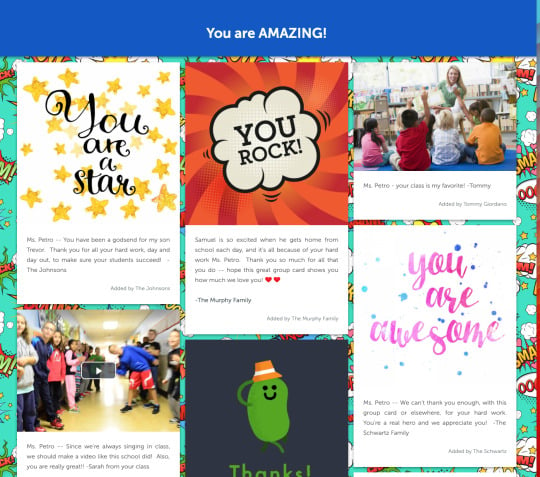“The deepest principle in human nature is the craving to be appreciated.” When William James, an America philosopher, wrote those words, he likely wasn’t thinking about social recognition in the workplace. However, most adults today spend the bulk of their time working, whether it be in the office, in a hybrid situation, or remotely. Our careers are a huge part of our lives, and so is the desire to be appreciated. Naturally, we want to be recognized by our colleagues in the workplace.
In this article, we will explain what social recognition in the workplace is, what are the benefits, give examples of social recognition, and discuss best practices companies can use to get social recognition right.
What is Social Recognition?
Social recognition is the act of recognizing a peer within the workplace. Also known as peer-to-peer recognition, it is the act of empowering and acknowledging fellow employees for their hard work and contributions.
Social recognition allows employees to acknowledge their peers’ contributions and achievements in various ways, such as praise, awards, public acknowledgment, and more. However, to get the most out of social recognition, companies must move beyond basic years-of-service awards and start recognizing and rewarding behavior in real time.
Practicing effective social recognition doesn’t have to be difficult. It allows all employees, regardless of their level within the company, to feel valued and recognized.

Why is Social Recognition Important?
Recognizing peers for their contributions is essential and can truly transform your company from the inside by improving productivity and reducing turnover. But the best part? Social recognition doesn’t have to be expensive or time-consuming, so companies can create a positive atmosphere without compromising other priorities.
In the workplace, social recognition is a crucial element in maintaining healthy social relationships. It also gives employees a space to celebrate their successes together as a community.
When a company prioritizes social recognition, it will see benefits from increased motivation, enhanced morale, increased engagement, higher retention, and more connected employees. Let’s break each of those down.
Increased Motivation
Recognizing an employee’s efforts for their contributions validates their efforts and instills a sense of pride. That sense of pride helps increase an employee’s motivation to continue performing at their best. Unmotivated employees can lead to worse performance, and we all know what that can do to a company’s performance (hint: it’s not good).
Public peer-to-peer recognition also ignites intrinsic motivation, which allows employees to perform at their best. Performance, productivity, and sheer enjoyment of work have all been found to be greater in people with higher levels of intrinsic motivation.
Enhanced Morale
Recognition has a profound impact on employee morale. When employees feel valued, appreciated, and respected, they experience a boost in self-esteem. This boost in self-esteem in turn can contribute to a sense of pride in an employee’s accomplishments.
Enhanced morale also plays a role in the physiological benefits of recognition. Recognition triggers a positive emotional response in employees. It satisfies the innate need we all have for validation and affirmation, which helps employees feel happier at work and increases their overall well-being.
Increased Engagement
Companies that foster a culture of appreciation through social recognition can increase employee engagement. People like to be recognized for their accomplishments (obviously), and employees who are frequently recognized will want to repeat or better that behavior.
Remember a time when you felt you worked hard on a project and felt proud of your work. Were you thanked or recognized for your hard work? Imagine if, the next day, your team thanked you for your contributions in a team meeting. How would that experience impact your work moving forward? You would likely have felt more intrinsically motivated to keep working hard on future projects to receive a similar response.
While it would be tedious to acknowledge every single task someone accomplishes, it is essential to understand the power that well-timed recognition holds in the workplace. When utilized correctly, it can be a catalyst for a massive improvement in engagement.
Read More: Employee Engagement Committee: Everything You Need to Know
Higher Employee Retention
It is in a company’s best interest to keep its employees rather than constantly hire new ones. High turnover rates cost a lot of money and can contribute to low morale in the remaining team. Social recognition improves employee retention, as recognition can help an employee feels loyal to their company.
There are many strategies and models companies can use to improve employee retention. (Our article about employee retention models dives into each of them thoroughly.) Social recognition fits into a few of these models. For example, Maslow’s hierarchy of needs explains a person’s basic needs and how unmet needs in the workplace could lead to dissatisfaction and thus high turnover rates. Social recognition meets a person’s social needs.
When employees are recognized, they feel a sense of belonging, acceptance, and pride in their accomplishments. All of this plays into the employee feeling satisfied and happy with their job, which would make them less likely to leave. Basically, social recognition is a great tool to keep your employee retention rates high.
Connected Employees
When thinking about recognition, many companies start with recognition from a manager (top-down recognition). That has many benefits, but peer-to-peer recognition is a powerful tool to connect employees and create a sense of community and belonging. When employees feel connected to their peers, they are more likely to collaborate and support each other. This creates a healthy company culture where employees can thrive.
Strong bonds between employees are critical to fostering a culture of appreciation, teamwork, and an overall supportive work environment. These strong bonds are built through mutual respect, along with recognizing and supporting your colleague’s accomplishments and goals. It is human nature to feel more connected to someone who is supportive and builds you up.

How Does Social Recognition Work?
Social recognition works through the acknowledgement and validation of individuals’ contributions, achievements, or behaviors. Let’s break it down further to understand how social recognition typically functions.
Observation
The process of social recognition begins with observing fellow coworkers’ actions, behaviors, or achievements to find patterns that deserve recognition. Whether this is achieved through direct observation, feedback from peers, or performance metrics, observation is the first step.
Expression
When an action or behavior is deemed worthy of recognition, a person within the company should acknowledge it in a meaningful way. Acknowledgment of an employee can be done in a handful of ways, such as a handwritten note, a shoutout on the team’s Slack channel or a shout-out board, or a shoutout during a team meeting. All of these small, meaningful acts of recognition make a significant impact over time.
Impact On Employees
Once the social recognition process begins, you will start to see the impact on employees. Not only does recognition create an intrinsic drive to work harder, but it also encourages employees to feel pride in their work. This causes employees to feel seen and valued, which leads to happier and more engaged employees.
Cultural Impacts
Once an organization truly embraces social recognition and continuously practices recognition, it will start to see a cultural impact. Regular and consistent recognition creates a culture of appreciation and recognition by fostering an environment where appreciating everyone’s efforts becomes the norm.
Feedback Loop
Social recognition often involves a feedback loop. A feedback loop is a management mechanism that facilitates continuous improvement. In other words, managers provide regular feedback and recognition to their teams, and allowing employees to fix problems quickly. Employees can also give feedback to their managers, creating the loop. The positive effects of social recognition, like increased intrinsic motivation, helps motivate employees to improve and reciprocate the recognition.
Recipient Response
Ultimately, how the recipient responds plays a crucial role in the effectiveness of social recognition. A positive response from the recipient validates the recognition and confirms it was meaningful. This plays into that feedback loop and reinforces the value of recognition.
When an employee responds to feedback with gratitude, it encourages others to want recognition and may cause them to work harder to gain that prize of social recognition.
The response to recognition can also strengthen relationships between the recognizer and recipient. Acknowledging your peers’ efforts in a public or social way can foster a sense of mutual respect.
Finally, the recipient’s response can set an example for others in the future. If an employee responds positively to the recognition, it shows others how to respond and encourages a culture where recognition is valued.
If you’re unsure how to respond when receiving recognition (and many of us need more practice!), the main rule of thumb is to be gracious. Be positive and accepting of the recognition, take pride in knowing your efforts are being acknowledged, and say thank you to the person recognizing you.

What Are the Best Practices For Social Recognition?
To get the most out of social recognition, here are five of the best practices companies can use when training employees on a new recognition program. Using these practices can help organizations foster meaningful, consistent, and impactful peer to peer recognition to cultivate a positive workplace culture.
Connect To Company Values
Company values exist to ensure all employees work toward the same goals. These values should support the organization’s vision and help to shape its culture. Therefore, the core values of a company should be embedded in the social recognition program to get maximum results. To accomplish this, companies can utilize company newsletters, team meetings, or the company website to highlight stories of recognition within the company and explicitly connect their actions to company values.
Example: Company A has a company value of teamwork. In a team meeting, a fellow employee said this about a fellow employee: “I’m so grateful for Tim and his hard work last week. I was frustrated with our project, but he went above and beyond to get everyone on board and helped us all feel connected and supported. He’s a great example of teamwork.”
Encouraging employees to support one another by recognizing each other’s accomplishments causes a ripple effect, with other employees within the company doing the same. The entire company culture is affected when recognition is tied to core values.
All About The Little Things
Recognition can be simple and inexpensive. Oftentimes, the best and most well-received acts of recognition are small and meaningful. A handwritten thank you note, a public shoutout during a team meeting, or an online group card where everyone can contribute are all small ways a company can foster social recognition. Not only are these small acts budget-friendly, but when used frequently, they can make a significant impact on the company.
Timing Matters
Social recognition’s timing makes a big difference in how it is interpreted and received. If an employee is praised for a project completed months or a year later, it would not mean nearly as much to them as when recognition comes quickly. Suppose that the same employee was recognized for their hard work within a reasonable time period (a week or less is generally best). In that case, the recognition will mean more and motivate the employee to keep up the excellent work. It is also important to remember that social recognition is not only about recognizing significant achievements. It is also about identifying small achievements regularly and informally.
Get Specific
Recognition is best when it is about something specific. Generic recognition can feel inauthentic, and it won’t cause a huge change in culture or allow organizations to see the benefits of social recognition.
Personalized recognition specific to something they’ve done or accomplished recently speaks directly to the employee and acknowledges their hard work on a personal level. This simple shift of customizing a message to be more specific to the recipient makes them feel singularly valued and causes them to be more intrinsically motivated to continue to work hard.
Get Everyone On Board
Any recognition program simply will not work if not everyone is using it. If just a few people are using the recognition program, it might make small changes here and there, but until everyone (especially leadership!) in the company starts to make recognition a regular part of their work life, the company won’t genuinely begin to see positive changes.

Examples Of Social Recognition
There are so many ways to say “thank you.” If you need a little help wording the perfect recognition message, read on (remember, you can tailor these for any type of recognition: peer-to-peer, top-down, or bottom-up). For more ideas, check out this post about employee recognition examples in the workplace.
- “Thank you, [Employee Name], for your excellent work on [Project Name]! Your dedication and attention to detail made a huge impact on the success of the project. We truly appreciate your efforts!”
- “I want to recognize the entire team on their accomplishment of [specific goal reached]. This accomplishment was done through the hard work of everyone collaborating and supporting each other. Keep up the great work!”
- “I want to recognize [Employee Name] for their work ethic last week. We had a deadline for [Project Name], and [Employee Name] never complained, put in extra hours, and made it possible for us to finish in time. Thanks for being awesome!”
- “Huge shoutout to [Employee Name] for helping us on [Project Name] last week! We know you had other tasks to complete, and this wasn’t really on your task list, but we so appreciate your collaboration and insight. It made all the difference!”
- “I want to give a shoutout to [Employee Name] for being an example of [desired behavior]. You are truly an example of [desired behavior], and all of us have seen your efforts. It has helped me be a better employee, and I’m grateful for your example.”
- “[Employee Name], thanks for your awesome problem-solving skills during our [specific event/problem] last week. We could not have solved that without your time, effort, and patience.”
- “[Employee Name], I am impressed by your willingness to learn. You are consistently seeking out new opportunities like completing [specific training/workshop]. We can all learn from your commitment to self-improvement.”
- “I want to personally thank [Employee Name] for going above and beyond to ensure our clients are satisfied. Your passion and dedication are truly inspiring.”
- “Your positive attitude and resilience, [Employee Name], has been a great source of motivation for the team. Thank you for being such a valuable part of our organization!”
- “A special thanks to [Employee Name] for their mentorship and guidance. Your support has made a significant impact on our team.”
- “Congratulations, [Employee Name], on reaching your sales target for the month! Your perseverance and strategy truly paid off. Well done!”
How To Start A Social Recognition Program
As with any new program, there are a few steps a company must take to ensure the success of a social recognition program.
Step 1: Define Objectives
Identify the goals you want the recognition program to achieve (e.g., increase employee engagement, boost morale, improve employee retention).
Ensure the recognition program aligns with your company values and culture. If a recognition program goes against what a company has already established (culture or values), then the program will likely fail.
Step 2: Choose A Program
There are many different programs for social recognition (and at Kudoboard, we may be biased). Kudoboard makes social recognition easy for everyone to use. Whether you are using Kudoboard to send a quick thank you or as a team celebration, we’ve got you covered. Kudoboard also makes integrations with apps like Slack or Teams seamless, so you can practice social recognition where people already are. The best part? Kudoboard can be used for much more than social recognition; check out all the features here.
Read more: 15 Questions to Ask in Selecting an Employee Recognition Software

Step 3: Train Leadership and Employees
To maximize efficacy, all employees should use a social recognition program. There are many different ways to train the company on a new social recognition program, so choose one that fits the company’s culture and employees’ needs and proceed from there. Ensure that leadership uses it to set an example for employees.
However you set up the training, make sure both leadership and employees go through it. This ensures that you get full benefits from your social recognition program, instead of limiting it to just managers and top-down awards.
Those are the steps to start the program; there are additional steps to ensure the program’s efficacy. These include implementing the program and tracking recognition metrics.
Harness the Power Of Social Recognition
Based on the overwhelming benefits social recognition has and how easy it can be to implement a social recognition program , companies should utilize this tool in the workplace.
By acknowledging and celebrating employees’ contributions and achievements, organizations can enhance morale, boost productivity, reduce turnover rates, and focus on intrinsically motivating employees. Social recognition reinforces positive behaviors and cultivates a culture of belonging and respect, leading to more robust team dynamics and increased job satisfaction. Investing in social recognition is a strategic approach that benefits both employees and the company.
Start a social recognition program with Kudoboard
Get started with social recognition with shout-out boards, spot awards, and more with a Kudoboard subscription.




